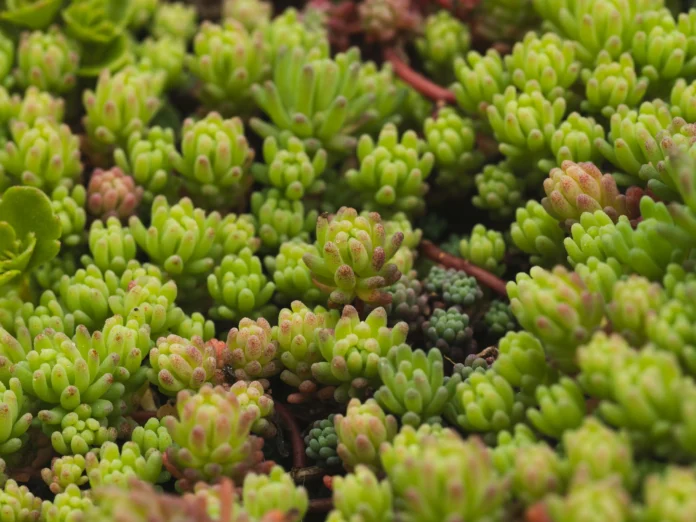Why It Matters: The African Plant Database Is Reshaping Botanical Science
While most people have yet to encounter it, the African Plant Database may be the most important biodiversity tool you’ve never used. The database has cataloged over 65,000 plant species— and more are being added— this open access database is quietly changing the landscape for scientists, conservationists, and environmental policymakers who work with African plants.
If you care about biodiversity, climate-resilient plants and crops, teaching agriculture, or medicinal plants, this article is for you. We’ll explain what the database is, how to use it effectively, and why it may be the missing piece of the puzzle in global ecological research.
What Is the African Plant Database?
The African Plant Database (APD), which is a collaboration with Conservatoire et Jardin botaniques de la Ville de Genève (Switzerland) and the South African National Biodiversity Institute (SANBI) as a lead partner, is an open access collaboration platform which hopes to be a trustworthy and updated data storage for plant species occurring in Africa.
Originally launched in the early 2000s, the APD has become a central reference point for:
- Botanists and taxonomists working on African flora
- Conservation experts seeking to protect endangered species
- Researchers and students conducting ecological, pharmacological, or agricultural studies
- Policy makers developing biodiversity strategies
“Biodiversity research cannot afford to overlook Africa, and neither can global conservation policies. The APD is our tool to make sure we don’t.” — Dr. Philippe Cuénoud, CJB Project Coordinator
A Massive Undertaking: What the African Plant Database Covers
The African Plant Database currently includes:
- 65,000+ species of flowering plants, trees, shrubs, and grasses
- Taxonomic data including: family, genus, species, synonyms
- Botanical authorship (who described the species)
- Geographical distribution by country
- Notes, synonyms, and cross-references under the “See under” field
- Creation and last-modified dates for transparency
Each entry is manually curated and verified by professional botanists, ensuring a level of quality far superior to scraped or crowd-sourced alternatives.
This type of rigor is also seen in other ecological databases, such as the Marine Organismal Body Size Database, which tracks organism-level data across aquatic ecosystems. Both platforms show how structured biodiversity data is becoming essential in cross-disciplinary environmental science.
How to Use the African Plant Database: A Quick Guide
The official database is hosted at: https://africanplantdatabase.ch/en
Step-by-Step Search Options:
- Search by Name
- Enter any species, genus, or family name
- Results display in a table format, with fields like:
- Family
- Name (clickable for detailed view)
- Comment
- See under
- Project
- Created / Modified dates
- Search by Country
- Useful for region-specific biodiversity studies or conservation planning
- Search by Author
- Ideal for tracing botanical contributions from key historical or contemporary researchers
Sample Use Case:
Let’s say you’re researching drought-tolerant species in Ethiopia. You can:
- Use the Search by Country tool to select Ethiopia
- Narrow down results by searching for keywords like Aloe or Acacia
- Click on any species name to access:
- Full taxonomic hierarchy
- Synonyms and alternate names
- Linked species in the same genus or family
Why the African Plant Database Matters
1. Climate Adaptation and Resilience
In regions increasingly affected by drought and extreme weather, native plants hold clues to climate resilience. APD helps identify species with:
- Drought tolerance
- Soil restoration potential
- Medicinal or nutritional applications in local communities
2. Conservation and Threat Analysis
Habitat loss, agriculture, and logging issues are driving many African plant species to extinction. By providing taxonomic information and distribution data, the APD supports work with IUCN Red List assessments, national biodiversity planning, and habitat prioritization for conservation NGOs.
3. Scientific Research and Education
From high school biology classes to post-doctoral fieldwork, the APD is an essential tool:
- Its taxonomic structure aligns with APG IV and other international botanical classification standards
- Freely accessible for schools, universities, and public institutions
- Supports ethnobotany, pharmacology, and agroforestry research
Limitations and What’s Still Missing
While the African Plant Database is a game-changer, it’s not without challenges:
- Incomplete coverage: Some regions, especially in conflict zones or remote areas, are under-documented.
- Language and accessibility: The interface is only available in English and French.
- No visual content: Unlike platforms like iNaturalist, APD lacks user-contributed photos, making field identification harder.
- No interactive maps or APIs: Data cannot be directly visualized or integrated into other research tools (yet).
Still, its data credibility and search precision make it one of the most valuable structured plant databases in existence.
Who Should Use It?
- Ecologists: To identify native species for ecosystem restoration
- Agricultural scientists: To explore underutilized or indigenous crops
- Policymakers and NGOs: For drafting national biodiversity reports
- Librarians and educators: As a reference tool for students
- Herbal medicine researchers: To validate species and synonyms
Final Thoughts: A Quiet Revolution in Plant Data
The African Plant Database is a hidden treasure in an ocean of information in the digital landscape with well-organized curation, academically credible, and openly available. It doesn’t scream for your attention, and it deserves it.
If you are going to engage in any bona-fide research into plants in Africa, this should be your first point of call.
Discover more in our science and ESG database collections for related tools and resources.
Expert Sources and References
- African Plant Database — Official project site
- APD Info Page — Project scope, methodology, contributors
- CJB Geneva & SANBI — Institutional collaborators and data curators
- “Africa’s plants: a database project has recorded 65,000 species and is still growing” — The Conversation, 2025


